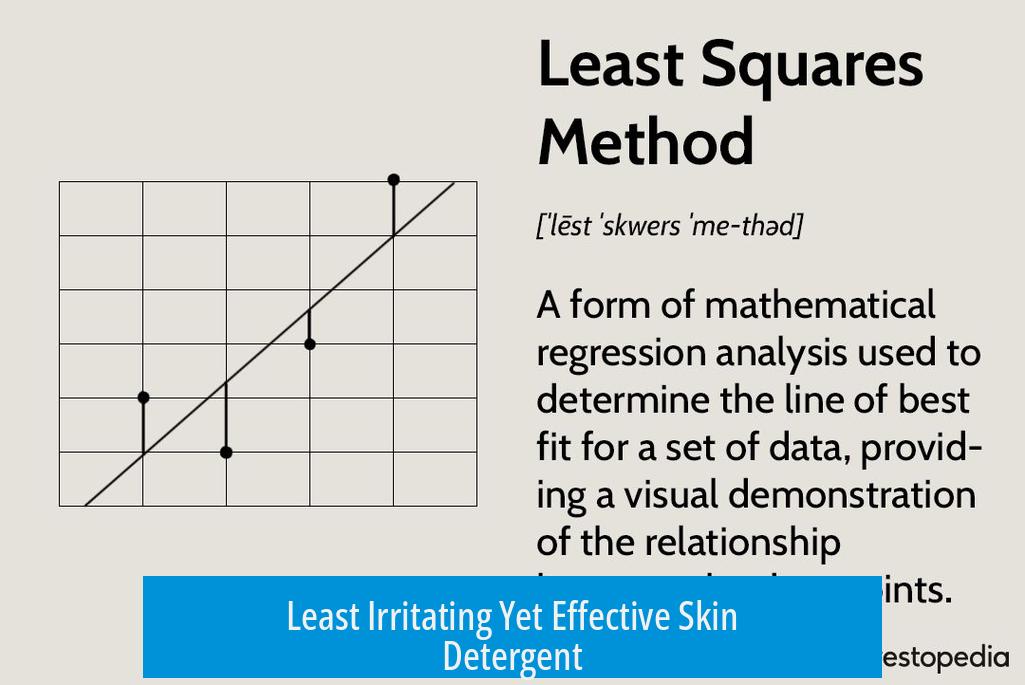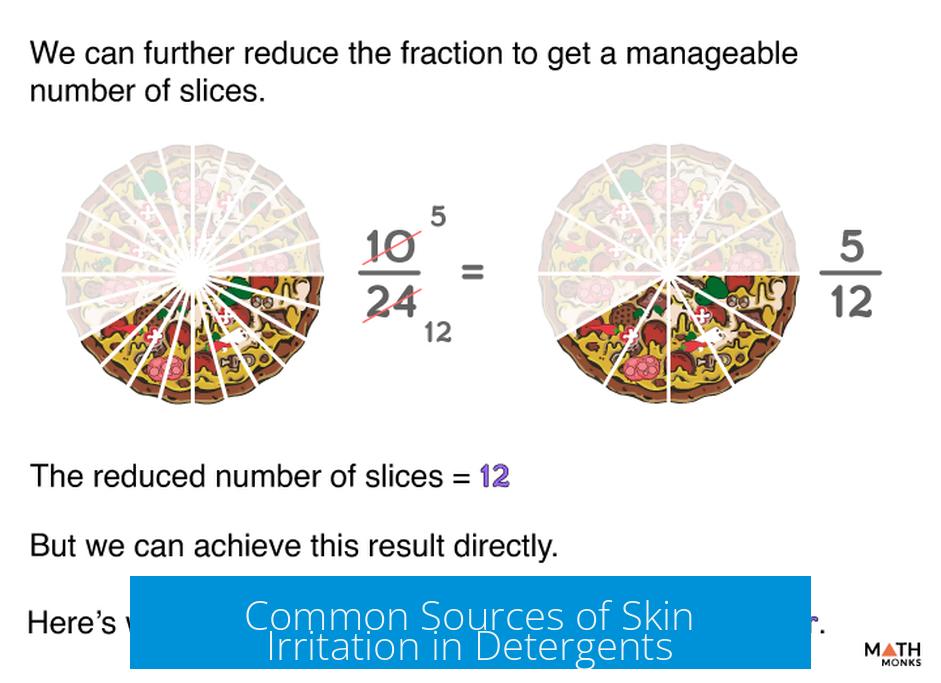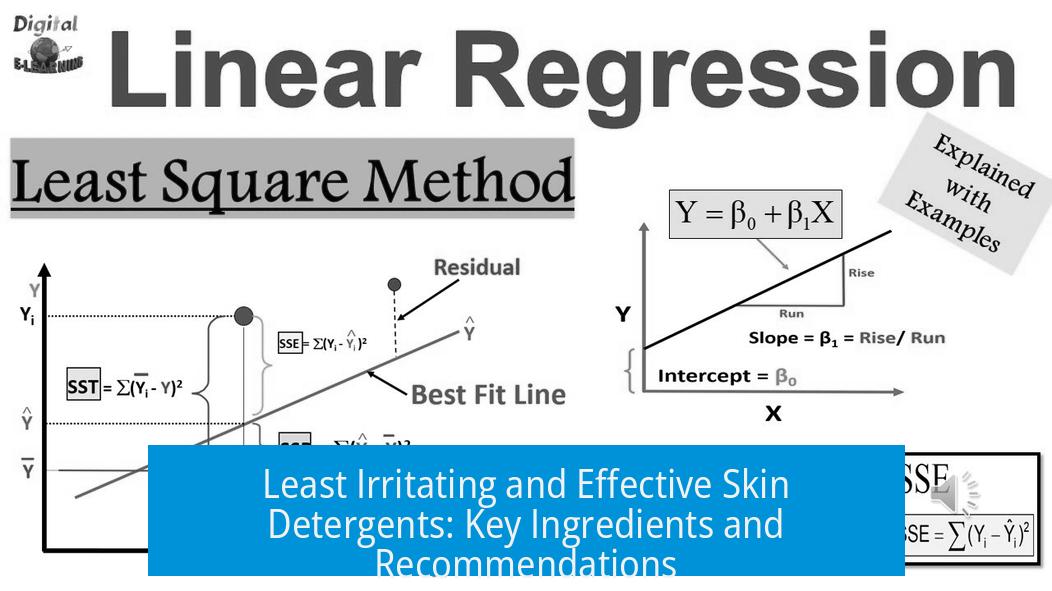Least Irritating Yet Effective Skin Detergent

The least irritating yet effective skin detergents combine gentle surfactants such as cocamidopropyl hydroxysultaine, sodium cocoyl isethionate, and sodium cocoyl methyl taurate. These ingredients clean effectively with minimal skin irritation, making them suitable for sensitive skin and daily use. Proper selection avoids common irritants like isothiazolinone preservatives, favoring mild formulations and simple bar soaps.
Effective and Low-Irritation Detergent Ingredients
Modern skin detergents must balance cleaning power and skin tolerance. Three surfactants excel in this regard:
- Cocamidopropyl hydroxysultaine: A mild amphoteric surfactant derived from coconut oil. It produces a creamy lather without significant irritation.
- Sodium cocoyl isethionate: A gentle anionic surfactant with excellent cleansing and low irritation. It adds mildness to bar soaps and liquid cleansers.
- Sodium cocoyl methyl taurate: Another mild anionic surfactant known for its soft touch on skin and effective removal of dirt and oils.
These three surfactants are preferred in formulations designed to minimize skin irritation while ensuring cleansing effectiveness.
Recommended Soap Types for Hands and Face
For daily cleansing of hands and face, simple bar soaps without bactericidal additives are advised. These are safer and less likely to irritate the skin. Non-bactericidal bar soaps avoid potent antimicrobial agents that may disrupt skin microbiota or cause dryness.
This approach aligns with dermatological recommendations emphasizing gentle cleansing to maintain the skin’s natural barrier.
Common Sources of Skin Irritation in Detergents

Many detergents contain microbicide stabilizers that prevent product spoilage. The most notorious group belongs to the isothiazolinone family:
- Methylisothiazolinone (MIT)
- Chloromethylisothiazolinone (CMIT)
- Benzisothiazolinone (BIT)
Though effective as preservatives, these chemicals are skin sensitizers and can provoke allergic reactions, especially with repeated use. Their presence often causes irritation despite concentrations being low and generally considered safe.
A key strategy to reduce irritation is to avoid products containing these ingredients by checking product labels carefully. This precaution is critical for individuals with sensitive or allergy-prone skin.
Hypoallergenic and Baby-Toddler Products
Products labeled as hypoallergenic and those formulated for infants or toddlers usually avoid irritant preservatives like isothiazolinones. These formulations tend to be safer due to stricter ingredient controls and minimize sensitizing agents.
Parents often favor these products for the whole family, especially for sensitive facial and body skin that is more vulnerable to irritants.
Mild Detergent Formulations
Formulating mild detergents involves blending non-ionic and amphoteric surfactants with skin-friendly adjuncts:
| Ingredient | Function | Typical Concentration (% w/w) |
|---|---|---|
| Decyl glucoside (Plantacare 1200UP) | Non-ionic, very mild surfactant | ~30% |
| Cocamidopropyl betaine (Dehyton 45K) | Amphoteric surfactant, foam booster | ~15% |
| Water | Solvent | ~65% |
pH adjustment targets near-neutral pH (~6.5) using citric acid to reduce skin barrier disruption.
Preservation strategies vary. Sensitive skin benefit from avoiding isothiazolinones due to allergy risk. An alternative preservative is DMDM hydantoin, a formaldehyde releaser, used at low concentrations around 0.3%.
Adding humectants like glycerine or urea at 1-2% enhances skin feel and prevents dryness caused by surfactants.
Availability of Mild Products Without Fragrance and Colorants
Many markets stock soaps and shampoos free from colorants and perfumes. Such products reduce potential allergens and irritants. For example, Neutral shower gel is a widely recognized product that fits this profile.
Choosing fragrance-free and dye-free options supports users with sensitive skin by eliminating common sensitizers.
The Paraben Factor in Modern Detergents
Parabens were once common preservatives but have largely vanished from mainstream products due to regulatory scrutiny and consumer preference. Their removal has little impact on irritation levels but reflects evolving safety standards and market trends.
Avoidance of Harsh Detergents and Soap Chemistry
Harsh detergents often cause more irritation and skin barrier damage. Limiting washing agents to saponified fats similar to traditional soap yields gentler effects.
Sub-saponified soaps contain leftover fats and have under-neutralized alkali, making them milder than fully saponified soaps or synthetic detergents.
Personal Approach to Product Selection
Careful label reading and formulation analysis help consumers identify low-irritation products. Accessing safety data sheets supports informed choices, especially for those with sensitive skin or allergies.
Such thorough research enables users to avoid harmful ingredients and ensure an appropriate balance between cleansing and skin tolerance.
Summary of Key Takeaways
- Gentle surfactants like cocamidopropyl hydroxysultaine, sodium cocoyl isethionate, and sodium cocoyl methyl taurate clean effectively with minimal irritation.
- Use non-bactericidal bar soaps for hands and face to minimize irritation risks.
- Avoid isothiazolinone preservatives (MIT, CMIT, BIT) which commonly cause skin allergies.
- Hypoallergenic and infant products generally exclude irritant stabilizers and are safer for sensitive skin.
- Mild detergent formulations combine decyl glucoside and cocamidopropyl betaine at balanced pH (~6.5) with gentle preservatives.
- Products without fragrance and dyes reduce sensitization potential.
- Parabens are largely phased out but this has minimal effect on irritation management.
- Avoid harsh detergents beyond traditional saponified fats and prefer sub-saponified soaps.
- Careful label and safety data sheet review aids personal selection of least irritating skin detergents.





Leave a Comment